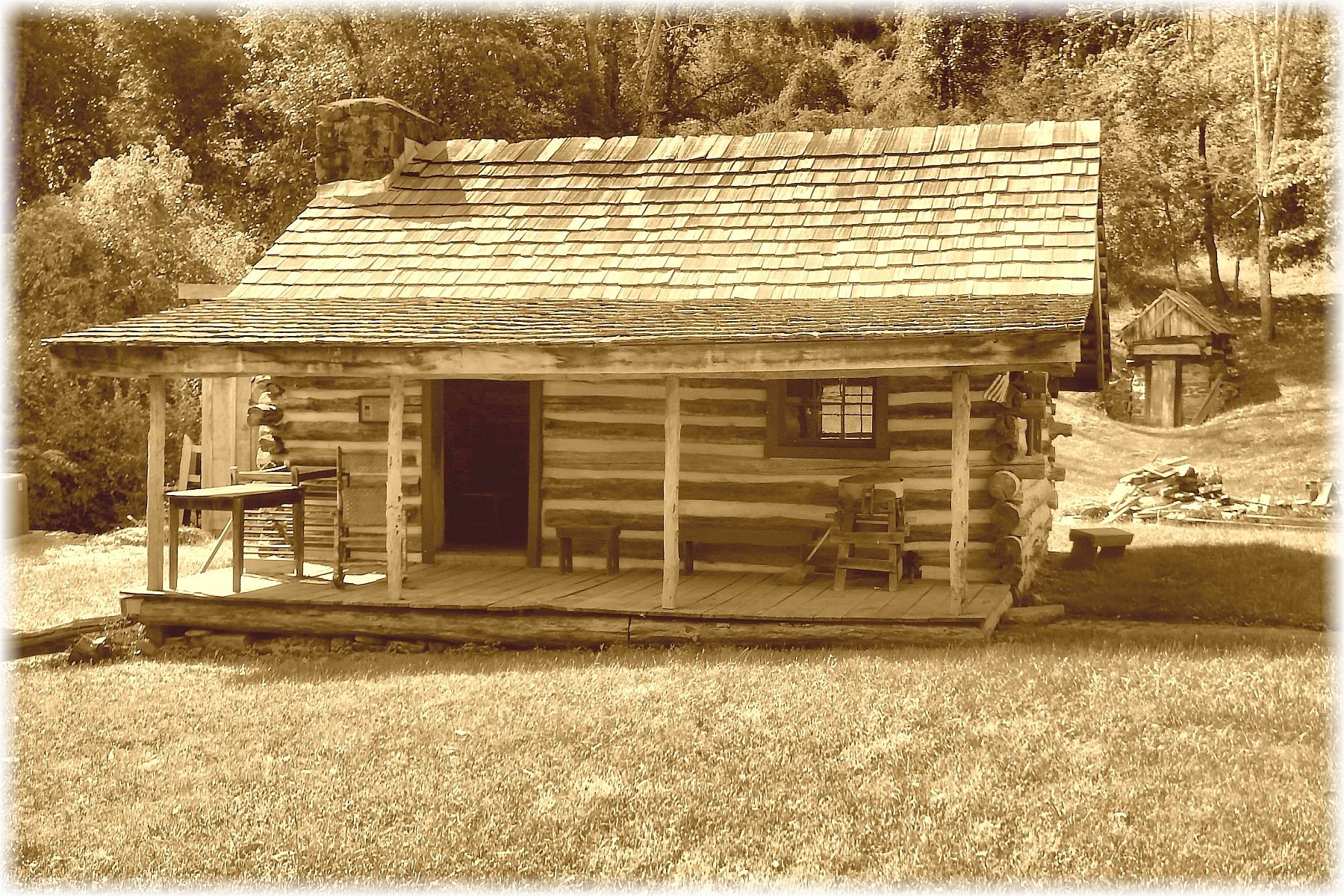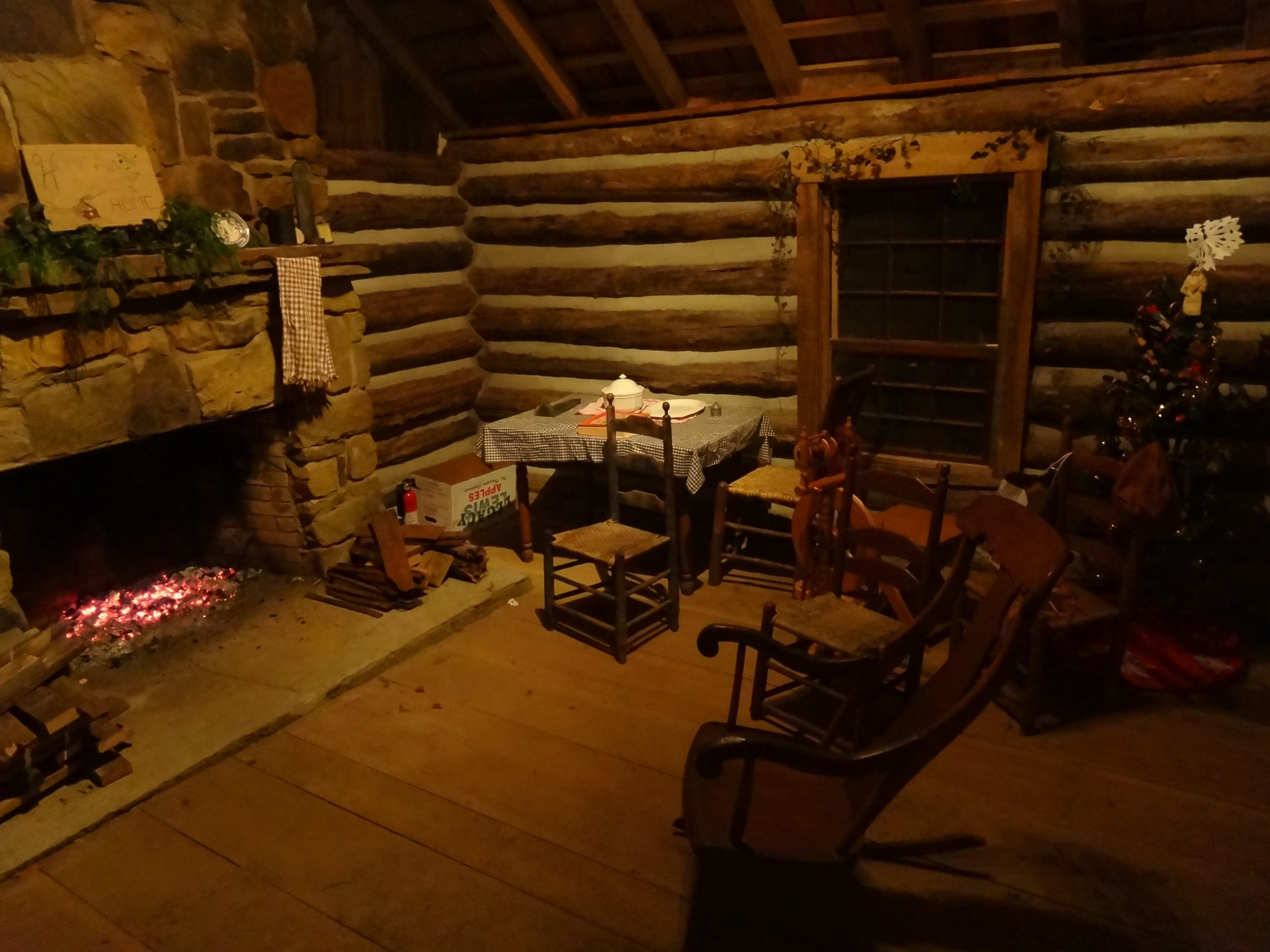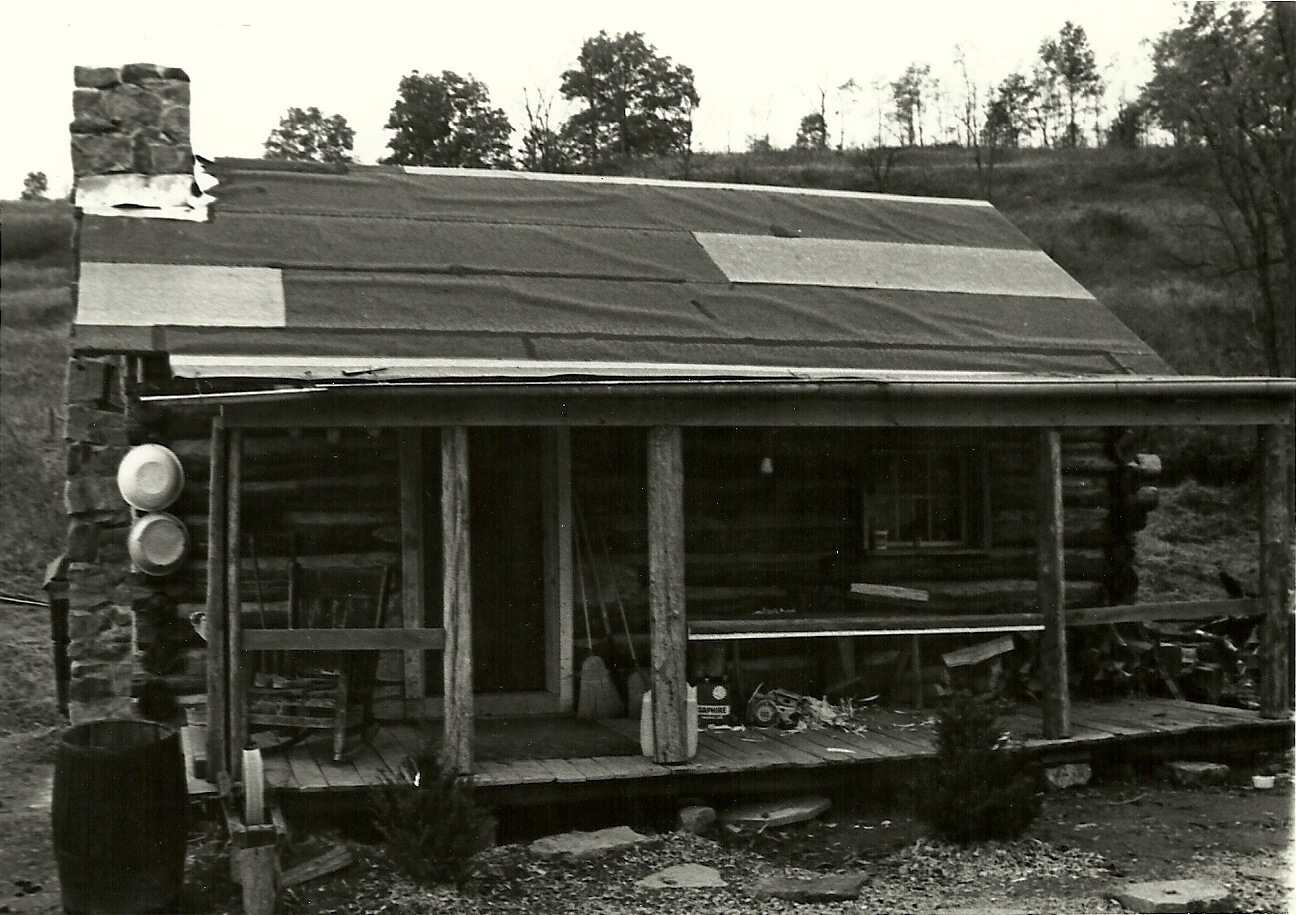FARM HOUSE
Name of Structure: The Farm House
Original Location: Big Flint – Doddridge County
Donated By: James Diamond
Labor Donated By: Kenneth Hulin and the Fort New Salem students of 1972 (primarily George Pinkham)
Original Sponsor: Kenneth Hulin and his wife Mary (In Memory of Roy and Cora Randolph)
Restoration Sponsors: Becky Howell Nesbitt, Carroll and Terry Van Horn, Dr. and Mrs. Joseph Audia, Ed Davis, Glenn and Mary Davis, Helen E. Jones, the Salem Baptist Church (In Memory of Bob Gum and John Pitts), (A Sponsorship in Memory of Eska and Raymond Robinson), the Marshville Community (In Memory of John Randolph), Kevin Fluharty, Michael and Margery Greer, Mr. and Mrs. John Kaull, Mutschelknaus Family Foundation, State Electric Supply, William and Peggy Ashcraft
The Farm House is unique because of its round log construction depicting a slightly older time period in its original construction. It was the first structure to be totally completed at Fort New Salem. The land this building was removed from was traced by deed to Hiram Corpany in 1863. The Farm House underwent complete restoration in 2013.
The Fort has elected to use the Farm House as a residence as it once was to give one the feeling of family life, the downstairs being used as a total family living and working center as well as sleeping quarters for the parents. The upstairs would have been used as a drying area, storage area and sleeping area for the older children. The very young children would have been kept close to their mother.
The fireplace was essential for survival and the center of the household. It provided heat in the colder months, light, and of course a way to cook. A fire would burn continuously, even in the summer months so that meals could be prepared. During the summer, some activities that revolved around the fireplace could then take place outside, such as candle making, soap making, laundry, dyeing and other such chores.
Students actually lived in this building to recreate the life and style of the times. They quickly learned that while it may seem like fun, in reality it was hard work and living was tough. They raised their animals and crops, and they also had to prepare them for their meals. Clothing had to be made and then hand washed with lye soap. Candles had to be dipped. It seemed like every day must be a preparation for another and that is exactly how it had to be. Procrastination left you with little to live with.
Families were so important. They relied on one another for the skills and labor each could lend to the household. The concept of teamwork is nothing new today. Children were a great asset to the family, even the youngest could lift and carry potatoes or drop seeds into a furrow. Food was a year-round chore. In the spring fresh greens, wild vegetables and fruits were gathered and stored or preserved in some manner. The garden was tended to and as much as possible was grown and harvested for the long winter months. Meat was also preserved by drying, smoking and salting. Young boys worked with their fathers planting and harvesting crops, building cabins, hunting, and skinning. Even weaving was a man’s trade. Girls worked closely with their mother preparing food, attending children, gardening, spinning and sewing. Some women kept kitchen gardens or herb gardens just outside the cabin, so that they could have some fresh vegetables and herbs right at their fingertips.
Near the Farm House is the Spring House. Traditionally, the Spring House was built to house a natural spring in the hillside and would have been used to capture water for use in the Farm House as well as keep things like milk and other products before refrigeration.
(photo shows Farm House around 1973 & 1985)
The content of this page was developed by information provided to and written by David Huffman, 2023 Intern Fairmont State University.






